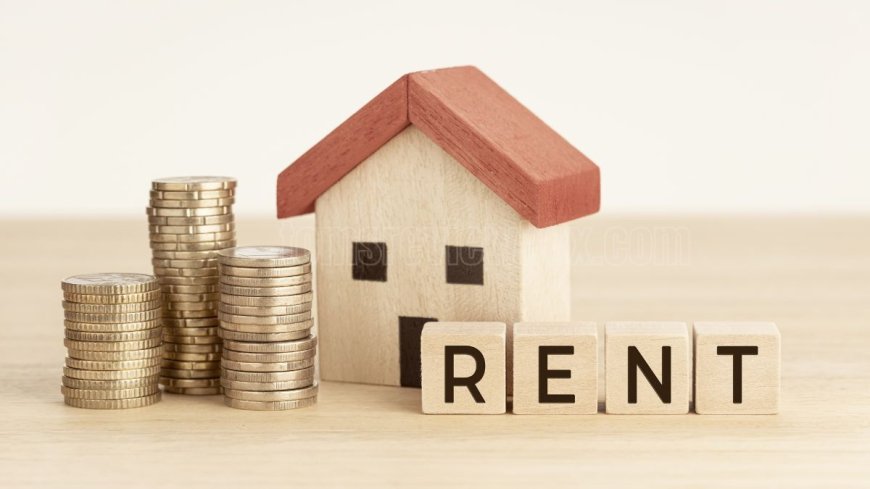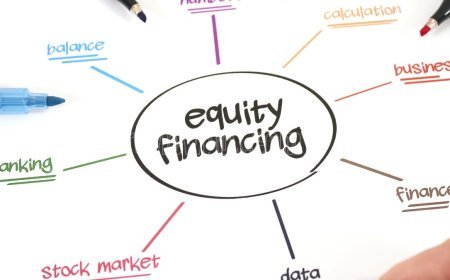How Much of Your Salary Should be Spent on Rent?
Discover the ideal percentage of your salary to allocate for rent, ensuring financial stability without sacrificing lifestyle.

Ever wonder what percent of salary should go to rent?
Experts recommend about 30%, but life isn't so straightforward.
Housing costs eat a large portion of our paychecks, and it can feel impossible.
The 50/30/20 rule provides some assistance by dividing income into needs, wants, and savings. Balancing rent within that needs category can ease stress.
If rent's too high, consider downsizing or looking for new roommates.
Income boosts help, too—side hustles or asking for a raise can work wonders.
With these tips, rent feels more manageable—and you get more peace of mind.
Key Takeaways
-
The rent-to-income ratio is a key metric. It will show you the perfect portion of your salary you should be spending on rent.
-
You should spend no more than 30% of your gross income on rent, according to financial experts. This rule helps you stay financially stable.
-
How to calculate how much rent you can afford.
-
Limiting your rent spending helps you avoid financial strain. This way, you can put more money toward savings and other necessary expenses.
-
Budgeting frameworks can help you manage your rent and other living expenses.
-
Negotiate your rent or get a roommate to negotiate better terms. You can decrease your rent cost even more and your potential savings by exploring less expensive neighborhoods.
What is Rent to Income Ratio
Definition and Explanation
Okay, so let's talk about the rent-to-income ratio. It's pretty much a test to see if rent fits comfortably within your budget.
Think of it as a financial thermometer checking to see whether your housing costs are too hot to handle.
To get this magic number, you take your monthly rent and divide it by your monthly income. Basic math, right?
Here's a quick example: if your monthly rent is $1,200 and your monthly income is $4,000, your rent-to-income ratio would be $1,200 divided by $4,000, which gives you 0.3, or 30%. This is the percentage of your income you're paying toward rent.
This ratio is an important measure of anyone making smart money moves.
It also shows you exactly how much of your paycheck goes to cover your housing costs.
You'll have a clear picture of what it costs to keep a roof over your head.
It's not just to pay the rent, either.
It's also important to know your financial limits and other expenses like food, transport, and savings.
Importance of Rent to Income Ratio
The rent-to-income ratio is more than just numbers. It's a big deal for your overall financial well-being.
Spending too much of your income on rent can put a strain on your finances. It can leave you short on cash for other important things.
A high ratio can be a red flag that you're in money trouble. You don't want rent eating up the majority of what you make.
That doesn’t leave you much for life’s necessities or unexpected emergencies.
Monitoring this ratio is the first step to becoming financially fit.
There’s an industry standard that says you shouldn’t spend more than 30% of your income on rent.
It’s a decent guideline, but not a hard-and-fast rule.
If you’re a little over, don’t freak out! As long as you can pay other costs, such as utilities, and live comfortably, you're golden.
For landlords, this ratio is a sneak peek into a tenant's financial habits. This helps landlords figure out whether a potential tenant can keep up with rent payments.
It's wise to pair this with other checks, like checking credit reports. That way, landlords have a more complete sense of a tenant's financial health and can make more informed decisions.
Recommended Rent to Income Percentage
The 30 Percent Guideline
Many folks have heard the 30% rule thrown around when it comes to rent. It’s sort of like the go-to piece of advice among financial advisers.
This rule recommends spending no more than 30% of your gross monthly income on rent. Gross income simply means everything you earn before taxes or other deductions, so that part is straightforward.
Here's the catch: this rule isn't personalized. It doesn't factor in things like inflation, soaring rental costs, or even personal debt.
As useful as it can be, it’s not the end-all-be-all.
Break it down so it comes down to that.
If you’re too hung up on this 30% rule, you could be in trouble.
If rent in your area has skyrocketed, you could be forced into an unaffordable position. Following this rule would take you somewhere well beyond your budget.
If you have large student loans or credit card debt, spending 30% of your income on rent may break your budget. This may leave you with no cash for savings or emergencies.
That’s where the 25% recommendation comes from.
This number gives you a little bit more breathing room.
They say to keep your rent at 25% of your take-home pay, and it keeps you on track. This strategy will boost your likelihood of saving for the future, building an emergency fund, and paying off debt.
It’s a balance.
If your take-home pay is $3,000 a month, choose rent around $750. Even though the amount fits the 30% rule, this choice makes more sense than going for $900.
Alternatives to the 30 Percent Rule
What if the 30% rule seems far too strict or simply not agreeable for you?
There are other kinds of budgeting where you're more focused on savings and personal goals.
Give the 50/30/20 rule a try for budgeting. Then, allocate 50% of your income to needs like rent, 30% to wants, and 20% for savings and debt repayment.
This strategy provides a bigger picture of budgeting instead of simply focusing on rent.
You can assess your own financial circumstances.
Key questions to ask before launching a new website:
For example, think about how much you honestly need for groceries, utilities, and other essentials.
Then, consider what percentage of your income you're comfortable spending on housing.
Remember, flexibility is key.
Your rent spending should reflect your lifestyle and priorities.
If you love eating out or traveling, perhaps you spend less on rent to save up more for those experiences.
Think about your long-term goals.
Perhaps you’re saving for a down payment on a house. If that's the case, keeping rent low could help you save faster.
If you're trying to pay off debt, limit your rent. That would free up cash and let you pay down those balances more quickly.
Calculating Rent Affordability
Calculate Gross Income Against Rent
Gross income is the cash you earn before taxes and all those deductions.
Why use gross income? Well, it’s kind of a big picture look at what you’re working with. It’s analogizing the entire pie before you cut it.
When calculating rent affordability, you want to see this whole pie. It gives you an accurate idea of what you can actually afford. Plus, you won't get bogged down by lots of post-tax income details.
For example, say you make $60,000 a year. Using gross income lets you see how much of that total can go to rent.
The traditional 30% rule suggests, in this case, you'd spend around $1,500 a month on rent.
Note that this rule can be pretty tight, particularly in expensive towns such as New York or San Francisco.
Tracking your income changes is smart. You got a pay increase? Perhaps your rent budget can go up. Received a pay cut? Time to take a look again.
Use a Ratio Multiplier
Now, let’s discuss ratio multipliers. This is like having a quick-and-easy tool in your financial toolkit.
Multiply your income by a certain percentage to find a solid rent limit. The 30% rule we mentioned above? Yup, that’s a ratio multiplier.
You can optimize that number. If you're saving for a big goal, you may use 25%. However, if you live in an area with sky-high rents, you might need to set aside 35%.
Here's how it works: take your annual income, say $50,000. Multiply by 0.3 (that’s 30%), and you’re looking at $15,000. Divide that by 12 to find your monthly rent cap—about $1,250.
This method is excellent for comparing different levels of income. Whether you make $40K or $80K, just plug in the numbers, and you've got your rent range.
Easy, right?
Alternative Calculation Methods
Ratios aren't the only way to determine if you can afford rent. Online calculators to the rescue!
Alternatively, you can run your income and expenses through a simple spreadsheet to determine what fits.
Why stop at rent when you can see your whole financial picture?
Let’s consider the 50/30/20 rule — another way to slice that pie.
Half of your income goes to cover essentials, such as rent. Then, you can devote 30% to your wants and set aside 20% for savings or debt repayment.
It's a flexible option that looks at more than just rent. Keep in mind other expenses—such as utilities, debt, or those pesky medical bills. It's also important to plan for these, particularly when you're relocating.
Saving three months' worth of expenses can act as a cushion for an emergency.
Reasons to Limit Rent Spending
Financial Stability
When we talk about financial stability, it's a little bit like having a safety net.
Staying within recommended limits for your rent, such as the frequently cited 30% of your gross income, can be a game-changer.
Why? Because it keeps your budget in check.
Spending too much on rent — more than 30% of your income, for example — can put a significant strain on your finances.
This isn't just theory; it's reality for over 19 million renters. They're overspending and tightening their belts financially.
Let’s get real for a second here.
If rent takes up half your paycheck, how can you afford groceries, utilities, and insurance?
Not to mention, if an emergency pops up, having a little extra cash can make a world of difference.
It's also smart to have money saved for those surprise expenses or savings.
Financial health is not just paying the bills; it’s having a cushion for when times get tough.
Keeping rent in check isn't just about today but securing a better tomorrow.
Long-term Savings Benefits
Now let's talk savings and how remaining rent low can help you save more money.
If your rent consumes a smaller portion of your income, you can stash away more money to save up for future goals.
Imagine putting that extra cash into a retirement fund or investing it so you get a bigger return down the road.
That’s the power of a balanced budget. It's about sacrificing comfort right now for long-term gain.
Think about it this way: living with someone else can cut your rent expense significantly.
It's a small price to pay for some solid savings.
If you're paying less in rent, there's more room in your budget for investments.
You can funnel that money toward retirement or other aspirations, such as starting a business or traveling.
The idea is to prioritize long-term financial health over short-term convenience.
It's about a future where you can do more with your money.
Implementing Budgeting Frameworks
1. Understanding the 50/30/20 Rule
You’ve got the 50/30/20 rule, which is a pretty neat way to think about your money.
You divide your after-tax income into three buckets.
First up, 50% for needs. This is the stuff you can’t live without, like rent, groceries, and utilities.
Then, 30% is for your wants. Think going out to eat, watching Netflix, or that awesome gadget you want to buy.
Finally, 20% goes into savings. This is your safety net—money for emergencies or retirement.
This rule provides a well-balanced approach to budgeting. It’s like getting a map for your money, so you can see where it’s going.
Here’s the catch: rent can be tricky.
If your rent swallows up more than 30% of your gross income, it can cause your budget to fall out of balance. You may struggle to keep rent and bills under that 50% needs cap.
While the 50/30/20 rule is a great guide, it’s not one-size-fits-all. You’ve got to do something different to make it work for you.
2. Applying the Rule to Rent
Now let’s discuss applying this rule to rent.
A good chunk of that 50% needs category will most likely be your rent.
What if you live in a city where rent is sky-high? Or maybe you have to shift things in places like New York or San Francisco.
Perhaps you take a bit from your wants budget or savings to pay rent.
Don’t take my word for it—look at your own numbers.
How comfortable are you with how much you’re putting toward rent? Do you have enough left over for other needs, wants, and savings?
The key is finding a balance that feels right for you. It's all about ensuring you're not spread too thin while still putting money into savings.
3. Adjustments for Different Incomes
If you do the 50/30/20 rule, it may need to be adjusted based on your income.
If you’re earning a bit more, perhaps you can save more than 20%. That could mean a faster track to financial freedom.
For those earning less, it could be more about needs and how to save money.
Most importantly, it's about customizing the budget to work for your life.
Be flexible—bend the rules so they don’t break you.
That way, you’re on track for financial success that’s tailored to your situation, not theirs.
Strategies for Reducing Rent Costs
Negotiating with Landlords
Now, when it comes to negotiating rent payments, you gotta be prepared. First, do a little market research to find the average apartment rent in your area. Knowing what other properties are charging will put you at a definite advantage in conversations about your monthly rent payments.
This means looking at local listings and perhaps even reaching out to some neighbors to find out what is what. Walking into a negotiation without this knowledge is like heading to a potluck with no dish—awkward and ineffective. Understanding the current rent prices will help you avoid housing affordability problems.
You don’t want to be all secretive and tense with your landlord. A plain, honest, friendly chat can do a lot to set things right. Perhaps you can speak on bundling utility costs into the rent, enabling you to have a predictable monthly budget that aligns with your overall income.
If you’re looking to renew your lease, you may have some leverage there, especially if you have a solid payment history. Landlords want stable tenants; it’s less of a headache than searching for new ones. So, don’t shy away from asking for a rent decrease or at least to maintain your rent steady.
Additionally, consider discussing rental assistance programs if you face financial challenges. This could provide you with a safety net while managing your essential expenses and any additional debt payments.
Ultimately, being informed about the rental market and knowing your rights as a tenant will empower you to make better financial decisions regarding your housing budget. With the right approach, you can negotiate a rent price that works for both you and your landlord.
Exploring Shared Housing Options
Living with roommates can help you significantly cut down on monthly rent payments. If you don’t mind sharing your space, you could save half or even more on your housing budget! By splitting the costs in a two- or three-bedroom apartment, you can allocate more funds for essential spending or even indulge in additional expenses.
There’s a social dividend here as well. Roommates can become friends, or at least companions to share your living experience. This social aspect can enhance your lifestyle while keeping your monthly costs manageable.
There’s a social dividend here. Roommates can become friends, or at least people to hang out with.
Compatibility is key in maintaining a peaceful environment, which in turn can help you avoid financial strain. A harmonious living situation allows everyone to focus on their own financial goals, whether it’s saving for a future apartment or paying off student loans.
In conclusion, sharing your living space can lead to significant savings on rent prices and create lasting friendships. By carefully selecting your roommates and utilizing the right platforms, you can enjoy the benefits of renting while keeping your monthly budget on track.
Choosing Cost-effective Locations
Want to know where to find a cheaper place?
You need to study neighborhoods with lower rent prices.
In some cases, you can save a lot by moving slightly farther out from the center of town.
It’s not just about the rent amount. You have to consider the trade-offs too.
For example, lower rent could mean a longer commute, which cuts into your time and transport budget.
Think about what’s important to you.
Does it have to have a short commute to work? Or perhaps local amenities like parks and shops are more important to you?
Make a list of what you can’t live without and what you’re willing to compromise on.
It's about finding that sweet spot that meets your needs, both from a cost perspective and a convenience contemplation.
Set up automatic transfers to a specific savings account. Do this six to 12 months before your move to take the financial burden down a notch.
Tips for Increasing Income
Seeking Additional Employment Opportunities
If you're ready to take your income to the next level, consider finding some side work. It’s like throwing a few more coals on your money fire.
You can find part-time gigs or freelance work. Maybe babysitting, dog walking, or even remote data entry—basically, tasks you can fit around your main job.
Networking is like your secret weapon. Not who you know, but who knows you.
Talk to your friends, participate in online communities, or go out to local events. You never know where the next opportunity will come from.
It’s really about establishing your name.
Then there’s the magic of the internet. Sites like LinkedIn, Upwork, or Fiverr are goldmines.
Find gigs that suit your skills and interests. You can do your job search right from your couch. You might find something you enjoy — and that can be fun and rewarding.
Enhancing Skills for Higher Pay
You’ve got one, and you want to make more money.
It’s all about leveling up your skills.
Think of it as investing in your future — you get a higher return.
It helps to take courses or get certifications in your field, which can help you land better-paying jobs.
Perhaps you’re a whiz with code or graphic design. There are distance courses for those.
Never stop learning.
The world is changing so fast. New tech, new methods, new everything.
You should also keep your skills fresh. It’s like adding more weapons to your arsenal.
Get a career path lined up.
Think about where you’d like to be a few years from now. Perhaps you desire a leadership role or a niche position.
Goal setting also provides you with direction and focus. You’ll know what skills to work on to boost your earning power.
Keep in mind that better pay means you can handle rent even if it's slightly over 30% of your income.
Conclusion
It may feel tricky to find the right balance, but it's possible.
Try to keep your rent to around 30% of your income per month. This keeps your budget healthy and leaves room for other stuff like food and fun.
Use budgeting tools to track and plan. If rent is too high, perhaps downsize or find a roommate. You could also increase your income with side gigs or new skills.
The goal? Instead, make choices that will keep your life affordable and allow you to save. It’s making wise choices and some planning.
You got this, and we’re here to help. Explore our guides and begin a journey to financial ease.
Frequently Asked Questions
What is a good rent to income ratio?
A good rent to income ratio is typically 30%, meaning prospective tenants should aim to pay no more than 30% of their monthly gross pay on rent payments to ensure affordability.
Why is 30% the recommended rent to income percentage?
The 30% rule can help keep your finances healthy by ensuring that your monthly rent payments do not exceed this threshold. This guideline allows you to catch up on essential spending like savings, utilities, and entertainment, helping you maintain a balanced budget without feeling financially strained.
How can I calculate my rent affordability?
To calculate your rent affordability, multiply your gross pay by 0.30. This provides the ideal rent amount you should allocate for monthly rent payments, helping you evaluate potential rental properties effectively.
What are the benefits of limiting rent spending?
Spending less on monthly rent payments allows for more money to allocate towards savings, emergencies, and personal goals. This strategy lowers financial stress and increases financial flexibility, contributing to a secure financial future.
What budgeting frameworks can help with rent?
Frameworks such as the 50/30/20 rule work well for managing monthly rent payments. Allocate 50% to needs, including housing costs, 30% to wants, and 20% to savings, ensuring a balanced budget.
How can I reduce my rent costs?
Consider negotiating with your landlord, exploring rent assistance programs, or finding roommates to manage monthly rent payments. Moving to a more affordable area can drastically reduce rent costs and enhance your housing budget.
What are some tips for increasing income to afford rent?
Finding higher-paying jobs, freelancing, or starting a side business can significantly increase your gross pay, allowing you to comfortably afford monthly rent payments. Additionally, upskilling and networking are effective strategies to enhance your income.
What's Your Reaction?







































![MacBook Pro M5: All the features and specs you need to know [LEAKS REVEALED]](https://tomsreviewbox.com/uploads/images/202502/image_430x256_67bd6d7cd7562.jpg)



























